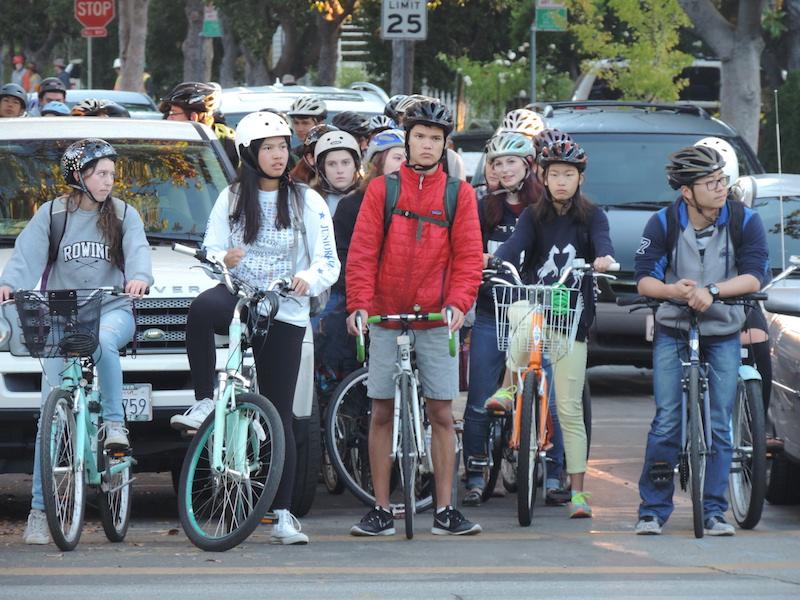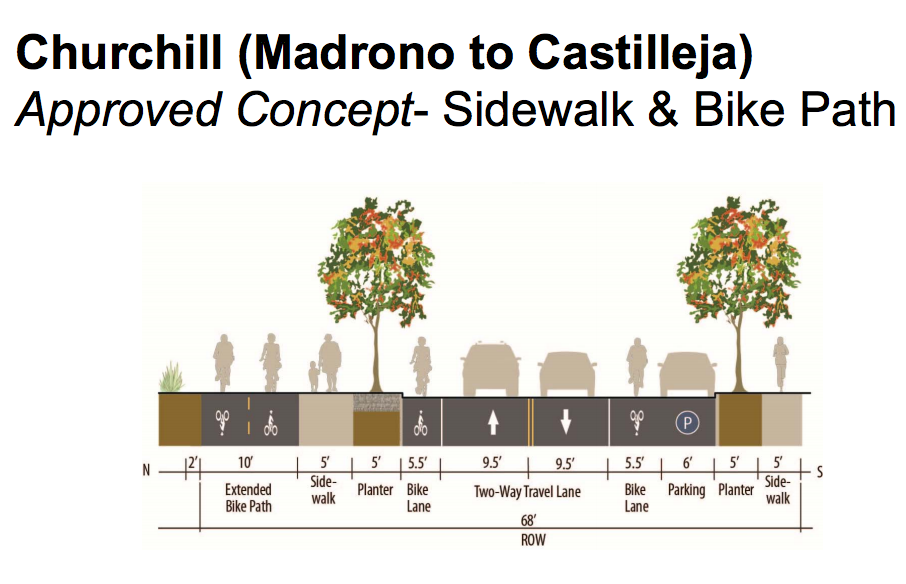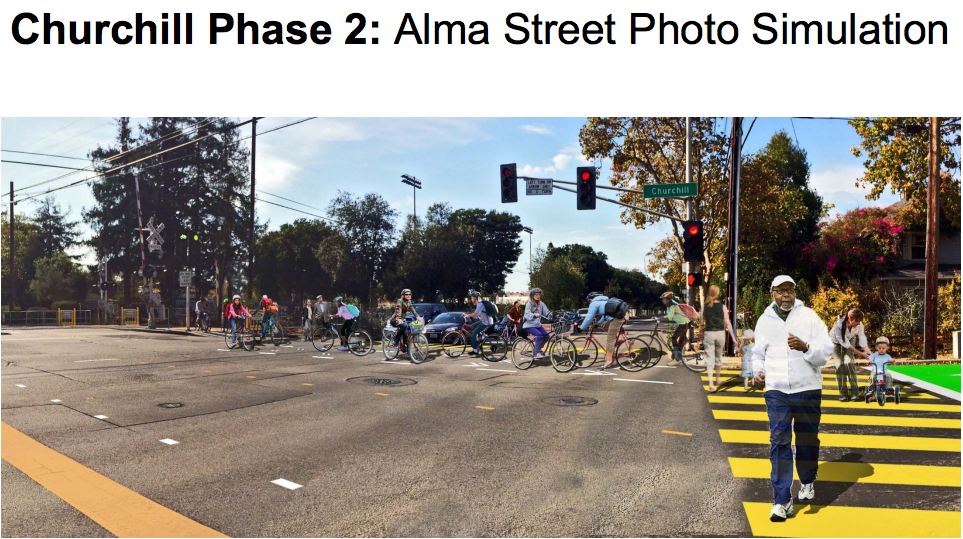
The City of Palo Alto plans to implement improvements to its city roads, some of which will directly affect Palo Alto High School student commuters, according to Joshuah Mello, the Palo Alto Chief Transportation Official.
In a community meeting on Oct. 22, Palo Alto’s transportation team discussed multiple changes in an effort to help Paly students have better access to the school campus from the west, east and south side.
There are two concept plans to this project. Phase One Concept Plan involves Churchill Avenue between El Camino Real and the Caltrain crossing, while the Phase Two Concept Plan focuses on Churchill Avenue between Bryant Street and the Caltrain tracks. City Council approved Phase One Concept Plans earlier this year, while the second phase is still being developed, according to Mello.
“We hope to conclude the concept planning stage for Phase Two quickly, so it can join Phase One in the final design stage,” Mello said. “Our goal is to begin construction within the next two years.”

Phase One aims to improve commuters’ safety. According to Mello, some of the changes that will soon be implemented include an extension of the multi-use path to El Camino Real and Stanford Perimeter Trail, an addition to a new westbound right-turn lane, El Camino Real signal improvements, a new crosswalk on the north leg, lighting improvements and a new rapid flashing beacon. The adopted concept plan also includes a raised crosswalk on Churchill Avenue at both Madrono Avenue and Castilleja Avenue.
“Raised crosswalks slow motorists as they approach and encourage them to yield to crossing pedestrians at a higher rate,” Mello said. “They offer tremendous safety benefits for pedestrians crossing the street at uncontrolled locations.”
Following the implementation of Phase One Concept plans, Phase Two’s proposed changes at the Alma Street and Churchill Avenue intersection include widening crosswalks, replacing the crossing surface with concrete and installing new lighting, according to Senior Transportation Planner Sarah Syed.

Phase Two seeks to accommodate the approximate 350 student bicyclists and 50 pedestrians who pass the Alma and Churchill intersection between the peak morning hours of 7:30 a.m. to 9:30 a.m., as well as the after school rush.
“We have, in a one-hour period, 300 to 400 students traveling westbound on Churchill to get to school,” Syed said. “In concentrated high volume demand, the afternoon situation is more challenging.”
Students who commute through the intersection expressed concern about their safety and voiced their support for changes.
“When you’re in the front, it’s not unusual to feel a little wary of the cars whizzing by you and the mob of packed students right behind you,” junior Jerry Hong said. “I’m glad to see that the city is trying to solve the issue and that it cares about the well-being of the students as we commute to and from school.”
These projects originated with the adoption of the “Palo Alto Bicycle & Pedestrian Transportation Plan” by the City Council in 2012, according to Mello. The initial plan’s goal was to expand bicycle and pedestrian commuting trips and to promote healthy lifestyles by creating bicycle-friendly infrastructure, according to the City of Palo Alto Website. These recent plans are an extension of the 2012 plan.
Implementing these concept plans are not easy and will create some complications, according to Mello.
“Some challenges that we are facing is preserving as much of the improved landscaping on the Paly property as possible, working effectively with Caltrain and the California Public Utilities Commission on the railroad crossing improvements and reaching consensus with the community on any proposed modifications to on-street parking or travel lane width,” Mello said.
Mello encourages any students who are interested in helping develop the concept plans to contact him at [email protected].
“We will be more than happy to review the initial concept plans with any interested students and incorporate their feedback into the design,” Mello said. “I also hope that students will help get the word out and notify anyone that they know who may be interested in this project, including their parents or neighbors. The more we hear from the public, the better the final design will be.”

